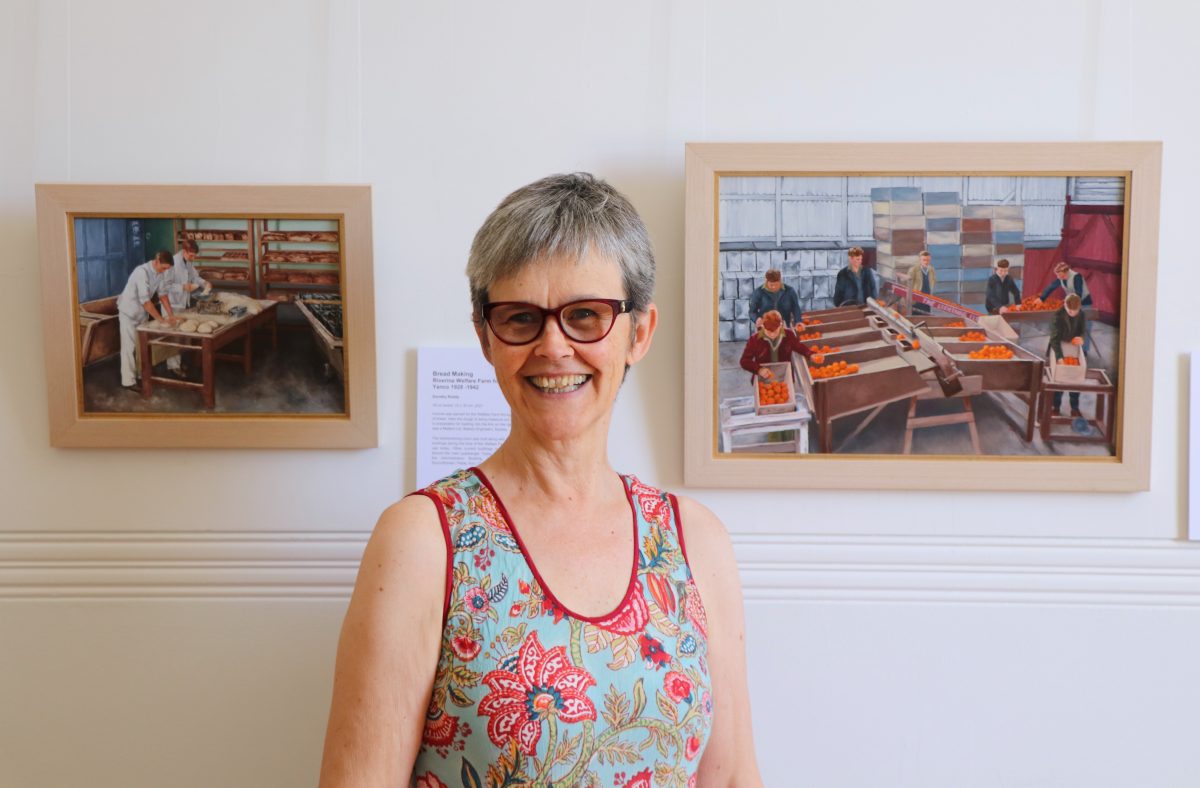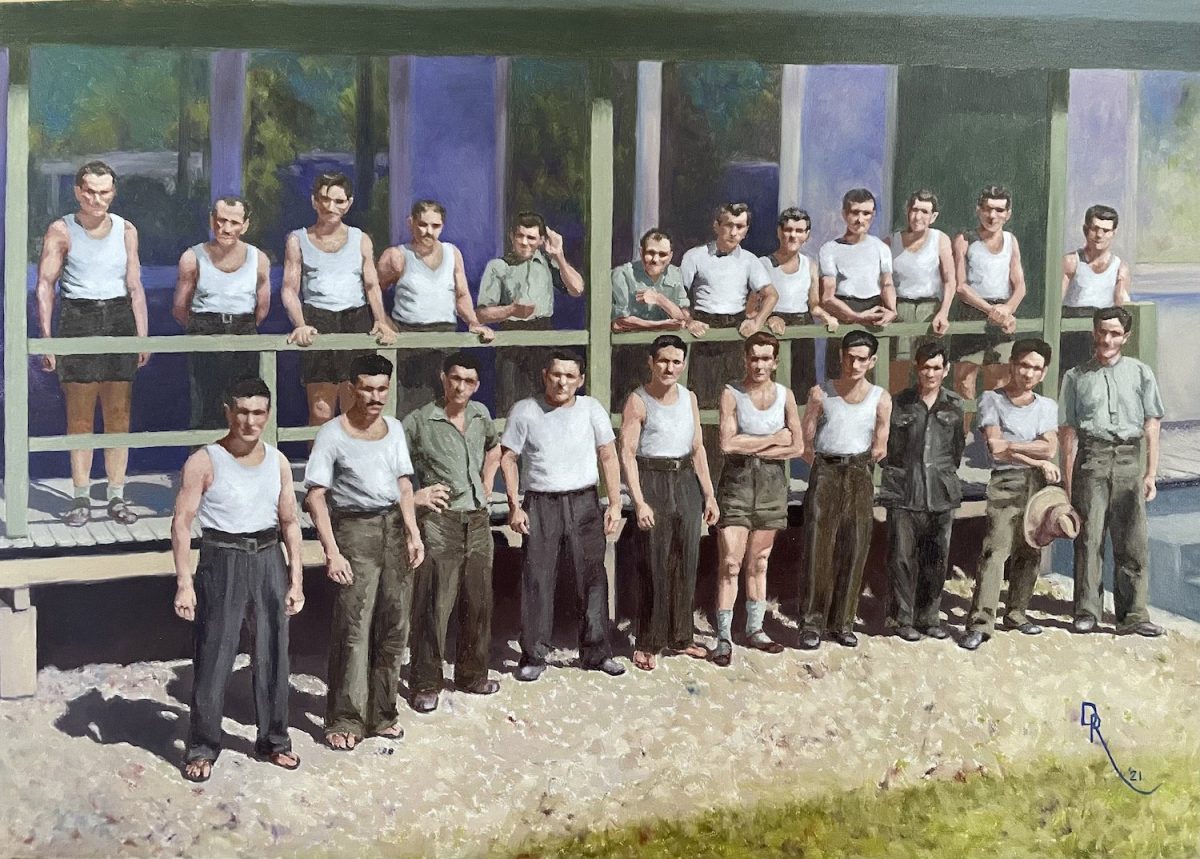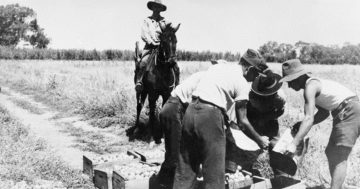
Dorothy Roddy in front of her artwork. Photo: Supplied.
An art exhibition on display at Griffith Regional Theatre chronicles the dark history of the site of the Yanco Agricultural Institute, which once hosted a controversial boys’ home and then a prisoner of war (POW) camp for captured Italian soldiers.
Murrami artist Dorothy Roddy has created Yanco ‘Moments of Time’ , a series of 12 paintings documenting and highlighting the history of the ‘Riverina Welfare Farm for Boys Yanco’ (1928–1942) and the ‘POW Camp 15 Yanco’ (1942-1946). The exhibition is accompanied with historical records, relics and press clippings about the 1920s to 1940s in the Riverina to inform, educate and contextualise.
The Yanco Agricultural Institute, which conducts research and provides courses on farming and irrigation, also includes the Yanco Museum Project, which is the permanent home of Ms Roddy’s artwork.
“In 2021, I was commissioned by Leonie Napier, Yanco Museum project coordinator, to reproduce historical photos as artworks. The original concept was to be in black and white, but I suggested I could use my new-found skill of colourising an image that would make for a more realistic portrayal of the subject. Thus, Yanco ‘Moments in Time’ was created,” Ms Roddy said.
The artist studied the fascinating history of the area, which between 1928 and 1942 operated as a training farm for delinquent boys, called the Riverina Welfare Farm. Up to 200 boys lived and worked at the farm in barrack-style accommodation.
“They were based in Sydney at a welfare facility that was overflowing … so were sent out to Yanco, where they learned life skills as well as farming skills,” Ms Roddy said.

Dorothy Roddy’s painting of the 22 original internees. Photo: Supplied.
The farm became quite controversial given how poorly the boys were treated.
“When the boys were first sent there, they came with their superintendent from Sydney. The things he made the boys do were just terrible. They had to run around the oval for hours; he made the boys punish each other,” she said.
The excessive punishment of boys through the military regime imposed by the first superintendent Major Parsonage resulted in him being dismissed in 1934. His position was taken over by Mr Harry Saxby, who implemented a series of reforms and innovations which saw the boys treated much better.
The boys’ home was closed in 1942, when the site was transformed to instead hold Italian POWs who were captured in Northern Africa during World War II.
“The POWs were brought to Australia because we had a severe manpower shortage. When they first arrived, the camps had barbed wire all around it and looked quite fearsome. But over time the restrictions were relaxed and the wire came down. After the war, all the prisoners of war were sent back to Sydney to be shipped back overseas to where they were captured,” Ms Roddy said.
Some of the Italians chose to return to the Riverina, which was a popular location for their countrymen. The story of the POW camp is chronicled in six of the twelve paintings at the exhibition.
Ms Roddy began her artistic practice in 2013, when she learnt to draw from a book which helped her develop a talent for portraiture. In 2020, she was invited to hold a solo exhibition at the newly opened Leeton Museum and Gallery (LMAG).
“This exhibition is for anyone interested in local history, or who has an affinity with the Yanco Agricultural Institute (formerly known as Yanco Experiment Farm) as well as art lovers,” Griffith Regional Art Gallery coordinator, Ray Wholohan said.
The exhibition will be at the section of the theatre known as ArtSpace until Friday 17 March 2023.








